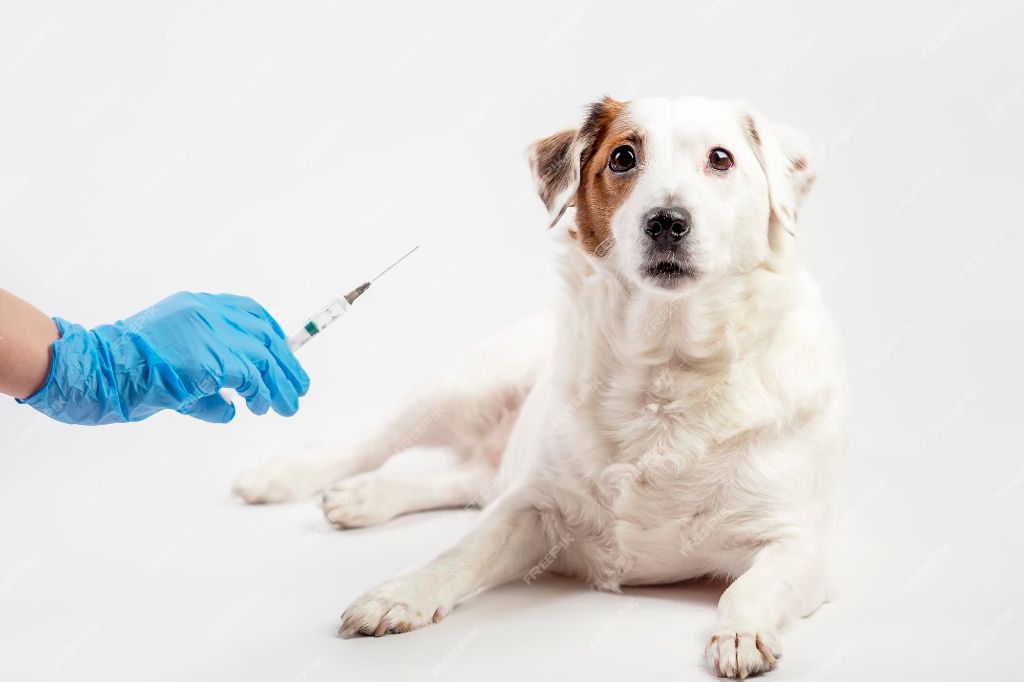Introduction
Cancer is one of the leading causes of illness and death in dogs. Like humans, dogs can develop different types of cancer that behave and respond to treatment differently. While cancer is typically triggered by environmental factors, genetics can also play an important role.
For some cancers in dogs, there are inherited genetic mutations or predispositions that can significantly increase the risk. These hereditary cancers, passed down from parent to pup, do not mean the dog will definitely develop cancer. But they make it much more likely compared to the average dog.
Understanding which cancers have genetic links, what predispositions may exist, and how to reduce risks is important for dog owners and breeders. While devastating, hereditary cancers do not have to be a death sentence if caught early and managed properly.
Background on Cancer in Dogs
Cancer is unfortunately very common in dogs. Studies show that about 1 in 4 dogs will develop cancer at some point in their lives. This is a much higher rate than what is seen in humans or even other animals. Some of the most common cancers seen in dogs include lymphoma, mast cell tumors, melanoma, soft tissue sarcomas, osteosarcoma, and mammary gland tumors.
There are several factors that contribute to the high rate of cancer in dogs. One is simply their shorter lifespan – cancer is more prevalent in older animals. Things like exposure to secondhand smoke, air pollution, pesticides, and poor nutrition can also increase a dog’s risk. Additionally, intact female dogs have a much higher risk of mammary tumors. Breed also plays a role, as larger breeds tend to develop osteosarcoma at higher rates.
Genetics and Cancer
Genetics play an important role in cancer susceptibility and development in dogs. Like humans, dogs have certain genes that can make them more prone to developing certain types of cancer.

Cancer susceptibility genes are normal genes that control cell growth and division. However, mutations or variants in these genes can increase the likelihood of uncontrolled cell growth, potentially leading to cancer. Some examples of cancer susceptibility genes in dogs include mutations in BRCA1, BRCA2, CDKN2A/B, and PTEN, which are associated with increased risks of mammary tumors, melanoma, and lymphoma.
In addition, purebred dogs tend to have higher rates of certain cancers compared to mixed breeds. This is due to years of selective breeding, which has led to smaller genetic pools and the concentration of susceptible cancer genes in certain breeds. For example, Boxers and Golden Retrievers are prone to mast cell tumors, while Bernese Mountain Dogs commonly develop histiocytic sarcoma.
Identifying the genetic underpinnings of canine cancers will be key for developing improved screening, prevention, and treatment methods to better manage cancer susceptibility and outcomes in dogs. Understanding the hereditary factors involved can also help breeders make informed decisions.
Hereditary Cancers in Dogs
Certain dog breeds have a higher likelihood of developing specific types of cancer due to genetic predispositions. While any dog can get cancer, some breeds are at an increased risk based on their genetics.
Some of the more common hereditary canine cancers include:
- Lymphoma in Boxers, Bulldogs, Bullmastiffs, Basset Hounds, Saint Bernards, Scottish Terriers
- Mast cell tumors in Boxers, Boston Terriers, Labradors, Beagles, Schnauzers, Bulldogs, Shar-Peis
- Osteosarcoma in Large and Giant Breeds like Great Danes, Irish Wolfhounds, Saint Bernards, Great Pyrenees
Genetic testing can identify dogs that carry genes linked to higher cancer rates. This allows breeders to responsibly breed dogs without those risky genes. For pet owners, genetic testing allows early intervention and prevention for dogs predisposed to certain cancers.
Lymphoma
Lymphoma is one of the most common cancers seen in dogs. It affects the dog’s lymphatic system, which is part of the immune system. Lymphoma occurs when lymphocytes, a type of white blood cell, grow abnormally and form tumors in the dog’s lymph nodes, spleen, liver, gastrointestinal tract or other organs.

There appears to be a hereditary factor associated with lymphoma in some breeds. Breeds with higher rates of lymphoma include Boxers, Bullmastiffs, Basset Hounds, St. Bernards, Scottish Terriers, Airedales, Bulldogs, Beagles and Golden Retrievers. The hereditary link is not fully understood, but there are likely genetic factors that predispose certain breeds to developing lymphoma.
Mast Cell Tumors
Mast cell tumors are a type of skin cancer that affects dogs. Certain breeds like Boxers, Boston Terriers, Labradors, Beagles, and Schnauzers have higher rates of developing mast cell tumors.
Research suggests there is a genetic basis for the high incidence of mast cell tumors in these breeds. Studies have identified mutations in genes like KIT and PTEN that are associated with mast cell cancer.
Scientists are still working to determine the exact modes of inheritance for genetic mutations that lead to mast cell tumors. But it’s clear that susceptibility can be passed down from parents to offspring in breeds prone to this type of cancer.
Regular screening and early detection are important for dogs genetically predisposed to mast cell tumors. Treatment usually involves surgical removal, chemotherapy, or radiation. But prognosis tends to be better when tumors are identified and treated in the early stages.
Osteosarcoma
Osteosarcoma is a type of bone cancer that commonly affects larger breeds of dogs. It arises from the cells that produce bone tissue and accounts for nearly 10% of all cancers diagnosed in dogs.
Certain breeds like Greyhounds and Irish Wolfhounds seem to have a predisposition for osteosarcoma, suggesting there may be a hereditary component. While the exact genes involved are still unknown, there is evidence that susceptibility can be passed down to offspring.
For example, studies have shown Greyhounds are 17 times more likely to develop osteosarcoma compared to other breeds. Since Greyhounds are closely bred and share common ancestors, it’s believed there is an inherited risk factor being propagated through the breed.
Additionally, osteosarcoma tends to develop at an earlier age in certain breeds, providing more clues that genetics are playing a role. While the mechanisms are still being researched, current evidence indicates osteosarcoma likely has a hereditary influence in some dog breeds.
Preventing Hereditary Cancers
While some hereditary cancers are inevitable, there are ways to reduce the risk of passing down genetic predispositions and developing cancer in susceptible breeds.
Breeding Practices
Responsible breeding practices are key to reducing hereditary cancers. Reputable breeders should screen for health and genetic issues before breeding. Breeding dogs with a family history of cancer should be avoided. Outcrossing to unrelated dogs can help dilute problematic genes. Breed clubs should also take the lead in researching health issues and promoting healthy lineages.

Lifestyle Factors
Protecting dogs from environmental triggers can lower cancer risk. Avoiding secondhand smoke, limiting sun exposure, and maintaining a lean body weight are some steps owners can take. Feeding a high quality diet with antioxidants may also be protective. Routine vet checkups to catch issues early are advised.
Screening Programs
Many purebred dog clubs sponsor screening programs for common breed-related cancers. Boxers, Bernese Mountain Dogs, and Golden Retrievers are some breeds with available testing. Detecting cancers or predispositions early allows for closer monitoring and earlier treatment. Discussing screening options with your vet is recommended.
Treating Hereditary Cancers
There are a variety of treatment options available for dogs with hereditary cancers. The main modalities include surgery, chemotherapy, radiation therapy, targeted therapies, and clinical trials.
Surgery is often the first line of treatment and can be curative if the cancer is localized and completely removed. The type of surgery depends on the location and extent of the tumor. Chemotherapy may be given before or after surgery to try to prevent metastasis and increase survival times.
Radiation is another localized treatment that is sometimes used if surgery is not an option. It involves delivering targeted high-energy rays to kill cancer cells and shrink tumors.

Targeted cancer therapies are newer treatments that specifically target molecular abnormalities in cancer cells. For example, tyrosine kinase inhibitors target certain mutated enzymes involved in cancer growth. Immunotherapy activates the dog’s immune system to attack cancer cells.
Finally, veterinary clinical trials offer access to promising new treatments. They allow dogs to receive innovative therapies like gene therapies, combination chemotherapies, and emerging immunotherapies.
The treatment plan for hereditary cancers in dogs is tailored to the individual based on the type of cancer, stage, age, and overall health. The goal is to control or cure the cancer while maintaining the best possible quality of life.
Conclusion
In summary, while canine cancers are not identical to hereditary human cancers, some breeds do seem prone to developing certain cancers due to genetics. The most common hereditary cancers in dogs are lymphoma, mast cell tumors, and osteosarcoma. Responsible breeding can help reduce the prevalence of canine cancers passed down through bloodlines. More research is still needed to better understand the genetics behind canine cancers. Early screening and preventative care may help catch cancers sooner in predisposed breeds. With proper treatment, dogs can go on to live happy lives even after a cancer diagnosis. Continued advances in veterinary oncology give hope for improving prevention and treatment of hereditary canine cancers in the future.
Research into the genetic factors influencing cancer in dogs is extremely important. Not only can it help veterinarians provide better care for our canine companions, but it may also provide insights into human cancers. Dogs and humans share many genetic similarities, live in the same environments, and develop cancers spontaneously like humans. Identifying cancer-associated genes in dogs could reveal key targets for developing improved cancer therapies that may help both humans and dogs. More research funding focused on canine cancers genetics will lead to healthier, longer lives for our four-legged friends while also advancing cancer treatment for all.